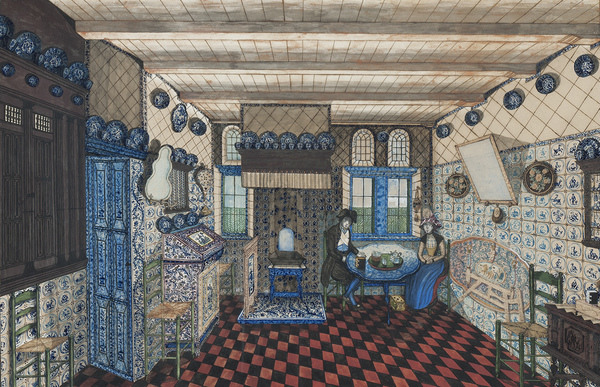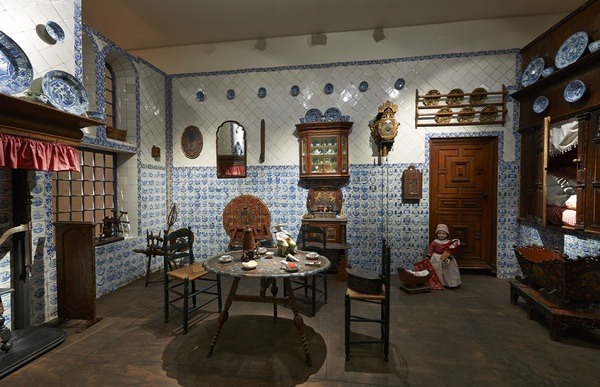In 1880, the carpenter Oege van Dijk wrote his name and the year, 1880, on the back of one of the wooden walls that make up the Frisian Society for History and Culture’s Hindelooper Room. His name reappeared, completely legible, in 2012, when the Hindelooper Room was dismantled and moved from the Eysingahuis, an 18th-century city palace in Leeuwarden, to the new Fries Museum.
Oege was one of many carpenters who worked on the Hindelooper Room over the years, helping to erect, dismantle, move, and reassemble it. This room has done a lot of travelling and in fact was specially made so that it could. But why? In 1877, the Frisian Society for History and Culture organised the Historische Tentoonstelling van Friesland (Historical Exhibition of Friesland) in the Stadhouderlijk Hof in Leeuwarden. This room was especially put together for this exhibition. Because rooms like these had long since disappeared from Hindeloopen, this one was based on memories and whatever relics could be found. Painted tables and chairs, bedsteads, and other materials such as chintzes from India and Kraak porcelain from China, were found in Hindeloopen and other places.

